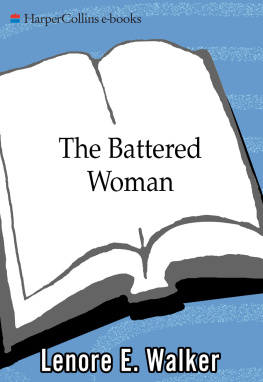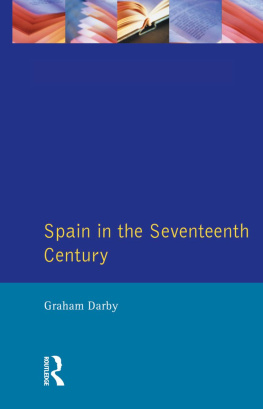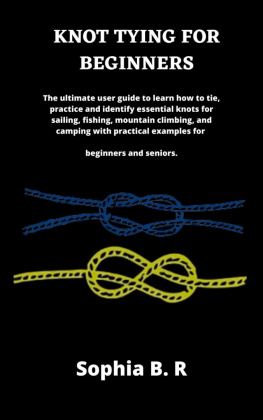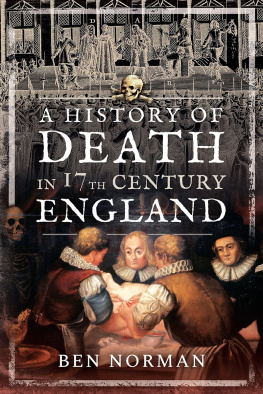Margaret Lenore Wiley - Subtle Knot: Creative Skepticism in Seventeenth-Century England
Here you can read online Margaret Lenore Wiley - Subtle Knot: Creative Skepticism in Seventeenth-Century England full text of the book (entire story) in english for free. Download pdf and epub, get meaning, cover and reviews about this ebook. year: 1969, publisher: Greenwood Pub Group, genre: Science. Description of the work, (preface) as well as reviews are available. Best literature library LitArk.com created for fans of good reading and offers a wide selection of genres:
Romance novel
Science fiction
Adventure
Detective
Science
History
Home and family
Prose
Art
Politics
Computer
Non-fiction
Religion
Business
Children
Humor
Choose a favorite category and find really read worthwhile books. Enjoy immersion in the world of imagination, feel the emotions of the characters or learn something new for yourself, make an fascinating discovery.

- Book:Subtle Knot: Creative Skepticism in Seventeenth-Century England
- Author:
- Publisher:Greenwood Pub Group
- Genre:
- Year:1969
- Rating:3 / 5
- Favourites:Add to favourites
- Your mark:
- 60
- 1
- 2
- 3
- 4
- 5
Subtle Knot: Creative Skepticism in Seventeenth-Century England: summary, description and annotation
We offer to read an annotation, description, summary or preface (depends on what the author of the book "Subtle Knot: Creative Skepticism in Seventeenth-Century England" wrote himself). If you haven't found the necessary information about the book — write in the comments, we will try to find it.
Subtle Knot: Creative Skepticism in Seventeenth-Century England — read online for free the complete book (whole text) full work
Below is the text of the book, divided by pages. System saving the place of the last page read, allows you to conveniently read the book "Subtle Knot: Creative Skepticism in Seventeenth-Century England" online for free, without having to search again every time where you left off. Put a bookmark, and you can go to the page where you finished reading at any time.
Font size:
Interval:
Bookmark:
Creative Scepticism in Seventeenth-Century England
by MARGARET L. WILEY
our blood labours to beget Spirits, as like soules as it can, Because such fingers need to knit That subtilc knot, which makes us man... JOHN DONNE 'The Extasie'
HARVARD UNIVERSITY PRESS Cambridge 1952
-3-
All rights reserved
PRINTED IN GREAT BRITAINin 12-point Fournier type BY UNWIN BROTHERS LIMITED WOKING AND LONDON
-4-
TO RODERICK MARSHALL
-5-
|
SINCE 'all experience is an arch,' one normally spends more of his time looking through it than examining its composition. Yet the individual would be both blind and ungrateful who did not try, on occasion, to call the roll of those influences upon his thought and life of which he is most aware, realizing all the while, of course, that one neither knows what he is nor dares to lay at the door of others the responsibility for what he has thus far become.
This book, for better or for worse, is one of the results of the kind of home my parents and grandparents provided, in which both literature and religion were made abundantly available, without either's having been strained through the sieve of dogma, and where actions spoke louder than words. It stems also from approximately eight years of listening, during youth, to the literate and inspired sermons of the late Dr. Harold H. Griffis in Portland, Oregon, and from an overlapping period of six years of listening to the equally literate and inspired lectures of the late Professor Barry Cerf at Reed College, who made accessible hitherto unexplored realms of the world's literature, philosophy and religion and who struggled persistently, often against stubborn resistance, to bring some order out of the chaos of my undergraduate mind. It was Professor George Williamson who, in a course in seventeenth-century literature at the University of Oregon, first suggested that a study of the co-existing scepticism and faith of the seventeenth century might enable me to make a pattern out of certain trends which I had appreciated without being able to identify. In spite of the dangers inherent in such a topic, Professor Kenneth B. Murdock at Harvard undertook to stand by and offer both moral and bibliographical assistance while I struggled to write something which would satisfy both my own intellectual needs and the standards of a great university. His continuing faith in the project has been invaluable. The very practical suggestion that I should publish separate
-7-
articles on the five sceptics before bringing out the book was made by Dr. Helen C. White of the University of Wisconsin.
To professional philosophers I am indebted for more light than I have been able to make constructive use of, notably to Professor Arthur O. Lovejoy of Johns Hopkins University and to the late Professor Felix Kaufmann of the Graduate Faculty, New School for Social Research.
Most of the ideas in this book have been beaten into their present shape by conversations with long-suffering friends, teachers and students during the past twenty-five years, for this is the only way one can become articulate. Those individuals who have survived this process will recognize bits of conversation reflected here and there; the others have been perhaps mercifully spared the embarrassment of being held even remotely responsible for the following pages.
My deep gratitude is due to the Oregon Branch of the American Association of University Women for a fellowship grant in 1937-38, which provided the necessary leisure for research and for the re-evaluation of old ideas.
Permission has been granted by the editors of The Hibbert Journal, the Journal of the History of Ideas, and The Western Humanities Review for the inclusion of portions of the book which have already appeared in the form of articles.
BROOKLYN COLLEGE M. L. W. December, 1950
-8-
|
|
PROLEGOMENA TO THE DEFINITION OF SCEPTICISM
IF Chekhov's judgment that every artist has an axe to grind is valid for the creators, it has an even greater validity for those who scan their creations and who seek to interpret literary trends and identify patterns of thought. Among this second group, the critics, it is practically impossible to conceal the axe, and it often turns out to be double-bitted; therefore one may as well at the outset declare his weapons and confess how he came by them.
This book, as honestly as I can now account for its genesis, seems to have been the result of the interplay of two forces -- one my own experience in learning how to live and the other my sharing the recorded experience of others. This latter, if one has been fortunate in his guides, is always proved upon the pulses, and out of that process is born one's conception of the nature of truth and one's convictions about the way it can be attained. Thus it is not quite accurate to say one is taught by what he reads. Rather does he ingest, like the amoeba, whatever in his environment seems life-sustaining, rejecting such foreign matter as he cannot use. Perhaps the whole problem of education, then, is to increase the range of the individual's susceptibility so that he may recognize the potentialities of larger and larger areas of his environment; but to suggest this is already to have slipped beyond description and into performance -- like Chaucer's Pardoner.
As the interaction between living and reading went on, I discovered myself powerfully drawn toward the poets and prose writers of seventeenth-century England and gave as an 'official' explanation the judgment that in this century the three areas
-11-
overlapped in which my chief interest lay -- literature, philosophy, and religion. Behind this academic faade, however, was the fact that I had caught sight, in the thought of these writers, of a pattern which was gradually forming itself in my own living. They spoke to me because our experience seemed made of the same stuff, and to expatiate on their meaning was to make the meaning of my own experience clearer and more explicit. The specific anomaly which I had set myself to study, on a hint from Louis Bredvold (in The Intellectual Milieu of John Dryden
Font size:
Interval:
Bookmark:
Similar books «Subtle Knot: Creative Skepticism in Seventeenth-Century England»
Look at similar books to Subtle Knot: Creative Skepticism in Seventeenth-Century England. We have selected literature similar in name and meaning in the hope of providing readers with more options to find new, interesting, not yet read works.
Discussion, reviews of the book Subtle Knot: Creative Skepticism in Seventeenth-Century England and just readers' own opinions. Leave your comments, write what you think about the work, its meaning or the main characters. Specify what exactly you liked and what you didn't like, and why you think so.





